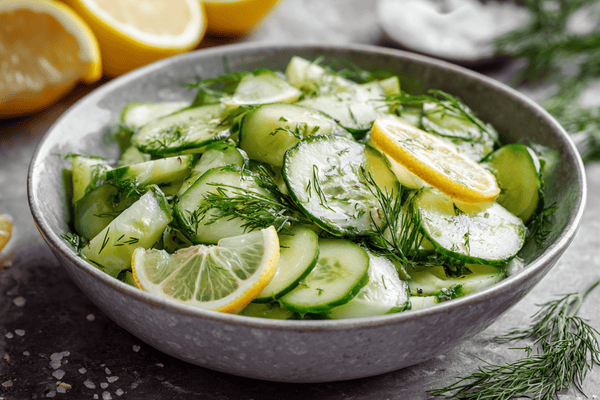
When it comes to cooking, tomato sauce and tomato paste are two ingredients that often find their way into various dishes. While they share a common ingredient—tomatoes—there are distinct differences between tomato sauce and tomato paste that can significantly impact the final outcome of a recipe. In this article, we will delve into the intricacies of these tomato-based ingredients, exploring their unique characteristics, taste, texture, ingredients, and how they are used in different culinary applications.
Table of content
Taste and Texture
Tomato Sauce:
- Tomato sauce has a vibrant and well-rounded flavor with a balance of tanginess and sweetness. It is known for its smooth and pourable consistency.
- The taste of tomato sauce can vary depending on the ingredients and seasonings used, such as onions, garlic, herbs (such as basil and oregano), salt, and sometimes sugar.
- It is commonly used as a base for pasta sauces, pizza toppings, and in various other dishes.
Tomato Paste:
- Tomato paste has a rich, concentrated tomato flavor with a slightly sweet undertone. It has a thick and dense texture, almost like a concentrated puree.
- The intense flavor of tomato paste is a result of the extended cooking and reduction process, which eliminates excess water content.
- Tomato paste is often used to add depth and complexity to recipes, particularly in sauces, stews, braises, and other dishes with a desired concentrated flavor.
Ingredients and Preparation
Tomato Sauce:
- Tomato sauce typically contains tomatoes, water, and a combination of seasonings. The additional ingredients can include onions, garlic, olive oil, herbs, spices, salt, and sometimes sugar.
- Commercially available tomato sauce may contain preservatives and additives, so it's essential to read labels if you have specific dietary requirements or preferences.
- Homemade tomato sauce allows for more control over the ingredients and can be customized to suit individual tastes.
Tomato Paste:
- Tomato paste is made solely from tomatoes, without the addition of water. The tomatoes are cooked down to reduce moisture and intensify the flavor.
- Some brands may add a small amount of salt as a natural preservative, but pure tomato paste should only contain tomatoes.
- Tomato paste is available in a can or tubed form and is widely used in cooking due to its concentrated flavor and thickening properties.
Culinary Applications
Tomato Sauce:
- Tomato sauce serves as a versatile base for numerous dishes, including pasta sauces, pizza toppings, soups, stews, and casseroles.
- It can be used as a dip for appetizers, a condiment for sandwiches, or a flavoring agent in meatballs, meatloaf, and other ground meat preparations.
- Tomato sauce can be tailored to suit different cuisines and tastes by varying the herbs, spices, and additional ingredients used.
Tomato Paste:
- Tomato paste is primarily used to enhance the flavor and texture of dishes, especially those that require a concentrated tomato taste.
- It serves as a foundational ingredient in many sauces, such as marinara, bolognese, and barbecue sauce, providing depth and richness.
- Tomato paste can thicken gravies, stews, and soups, adding body and a concentrated tomato flavor.
Recipe: Homemade Tomato Sauce

Ingredients:
- 2 pounds (900g) ripe tomatoes
- 1 tablespoon olive oil
- 1 small onion, finely chopped
- 2 cloves garlic, minced
- 1 teaspoon dried basil
- 1 teaspoon dried oregano
- 1 teaspoon salt (adjust to taste)
- 1/2 teaspoon black pepper
Instructions:
- Bring a large pot of water to a boil. Score a small "X" on the bottom of each tomato.
- Carefully place the tomatoes in the boiling water and blanch for about 30 seconds. Remove the tomatoes and immediately transfer them to a bowl of iced water to cool.
- Peel the skins off the tomatoes, then cut them in half and remove the seeds.
- In a large saucepan, heat the olive oil over medium heat. Add the chopped onion and minced garlic, and sauté until the onion becomes translucent and fragrant.
- Add the peeled and seeded tomatoes to the saucepan, along with the dried basil, dried oregano, salt, and black pepper. Stir well to combine.
- Reduce the heat to low and simmer the sauce uncovered for about 45 minutes to 1 hour, or until the tomatoes have broken down and the sauce has thickened.
- Using an immersion blender or countertop blender, blend the sauce until smooth. If you prefer a chunky sauce, you can skip this step.
- Taste the sauce and adjust the seasonings as needed. You can add more salt, pepper, or herbs according to your preference.
- Allow the sauce to cool before transferring it to sterilized jars or containers. It can be stored in the refrigerator for up to one week or frozen for longer preservation.
Recipe: Homemade Tomato Paste

Ingredients:
- 4 pounds (1.8kg) ripe tomatoes
- 1 tablespoon olive oil
- 1 teaspoon salt
- Optional: herbs and spices of your choice (e.g., dried basil, oregano, thyme, or garlic powder)
Instructions:
- Preheat your oven to 300°F (150°C).
- Cut the tomatoes into halves or quarters, removing the stems and any damaged parts.
- Place the tomatoes in a large bowl and drizzle with olive oil. Toss to coat evenly.
- Arrange the tomatoes in a single layer on a baking sheet lined with parchment paper.
- Sprinkle salt (and optional herbs/spices) over the tomatoes.
- Bake in the preheated oven for approximately 3-4 hours, or until the tomatoes have shrunk in size and most of the moisture has evaporated. The tomatoes should be slightly browned and caramelized.
- Remove the baking sheet from the oven and let the tomatoes cool completely.
- Transfer the cooled tomatoes to a blender or food processor and blend until smooth.
- Place a fine-mesh sieve or cheesecloth over a bowl and pour the blended tomato mixture into it. Let it sit for a few hours or overnight to allow the excess liquid to drain.
- Once the excess liquid has drained, transfer the thick tomato paste into sterilized jars or an airtight container.
- Store the tomato paste in the refrigerator for up to two weeks or freeze it for longer preservation. To freeze, divide the paste into smaller portions and place them in freezer-safe containers or ice cube trays.
Enjoy your homemade tomato sauce and tomato paste in various recipes, knowing that they are made with fresh ingredients and customized to suit your taste preferences!
FAQ
Q: Can tomato sauce be substituted with tomato paste?
A: Yes, tomato paste can be diluted with water or broth to create a substitute for tomato sauce. However, the flavor and consistency will differ, so adjustments may be necessary in the recipe.
Q: Is tomato paste more nutritious than tomato sauce?
A: Tomato paste is more concentrated, containing higher amounts of certain nutrients like lycopene, a powerful antioxidant found in tomatoes. However, the nutritional content can vary depending on the brand and processing methods.
Q: Can tomato sauce and tomato paste be used interchangeably in recipes?
A: Tomato sauce and tomato paste have different consistencies and flavors, so while they can sometimes be used interchangeably, they may alter the final taste and texture of the dish. It is best to follow the recipe guidelines for optimal results.
Q: Does tomato sauce or tomato paste have a longer shelf life?
A: Tomato paste has a longer shelf life than tomato sauce. Once opened, tomato paste can be refrigerated and used within a week, while tomato sauce should be consumed or refrigerated promptly and used within a few days.
Q: Can I freeze tomato sauce and tomato paste?
A: Yes, both tomato sauce and tomato paste can be frozen for future use. It is recommended to store them in airtight containers or freezer bags and label them with the date to ensure freshness.
Conclusion
Understanding the difference between tomato sauce and tomato paste is crucial for achieving the desired flavor, texture, and consistency in various dishes. Tomato sauce offers a versatile base with a balanced flavor, while tomato paste provides concentrated richness. Knowing when to use each ingredient enhances the culinary experience, allowing for the creation of delicious and well-rounded recipes. So, the next time you reach for tomatoes in your kitchen, consider whether tomato sauce or tomato paste is the perfect choice to elevate your dish to new heights of flavor and depth.


